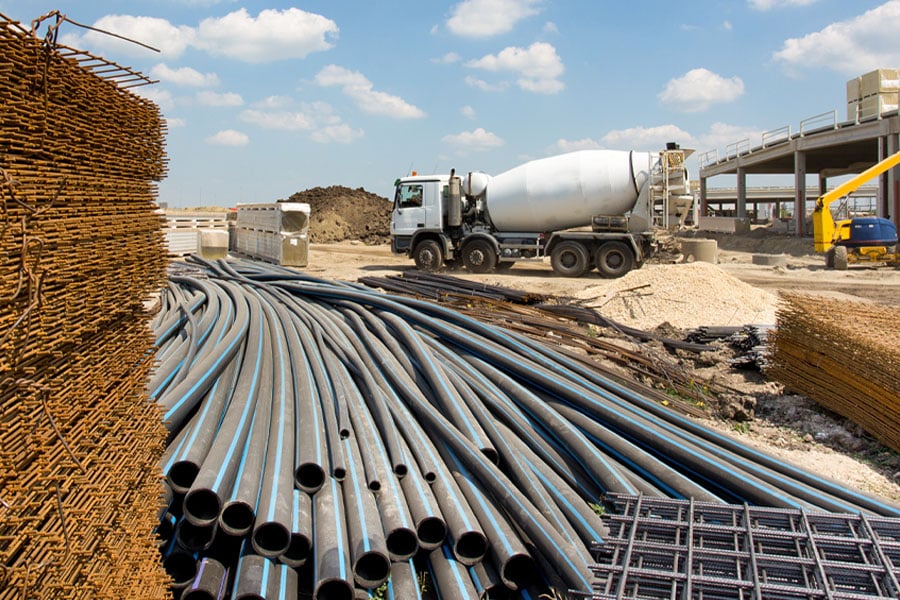The wait for construction equipment and materials seems interminable nowadays. In some cases—emergency generators are an extreme example—contractors can wait more than a year for an order. Lead times typically run 6-9 months for steel products like joists and decking and 4-8 months for roofing materials.
Lengthy delays like these make life challenging and unpredictable for contractors and other construction firms trying to estimate costs for projects and then deliver on time and within budget.
To learn more about the situation, Built spoke with Michael Hardman, vice president and head of cost management at Turner & Townsend. The firm provides construction project management services in the commercial real estate, energy and natural resources, and infrastructure sectors in 50 countries.
Built Blog: What’s causing longer material lead times and higher pricing now?
Hardman: In the current environment, we are seeing the perfect storm—a combination of the pandemic, global economy and events in Eastern Europe.
In North America, the pandemic was the main driver and catalyst leading to longer material lead times and higher pricing. This happened because manufacturing ground to a halt for many producers. When production did resume, it was often curtailed or disrupted by COVID outbreaks in factories and warehouses. The structure of the supply chain means that even a small disruption on the production line can have knock-on effects.
As materials became less readily available, prices rose. And many manufacturers lost money during the pandemic. Combining that with an increase in other base costs drove prices still higher.
Manufacturers who relied on international delivery of parts and products suffered and had to shift their base or use local materials, again impacting cost, supply and demand. The economy also experienced transit and labor issues, leading to longer material lead times and higher pricing.
While the global economy is the main driver of inflation, the conflict in Eastern Europe has impacted trade in the region and further increased lead times and material pricing.
Built: What equipment and materials are particularly subject to longer lead times now vs. pre-pandemic?
Hardman: We have seen lead times for materials increase across most product categories:
- Roofing insulation (667% increase)
- Roofing membrane (800% increase)
- Drywall and studs (600% increase)
- HVAC equipment (267% increase)
- Wood doors (233% increase)
- Switchgear (186% increase)
- FF&E (120% increase)
- Lighting and controls (100% increase)
Built: Even for more readily available materials, by how much has lead time increased?
Hardman: Even for more readily available materials, lead times have doubled and even tripled. This impacts timelines, which our International Construction Market survey (ICMS) discussed. Most survey respondents have seen increases of at least three or more weeks.
But currently we are seeing significant variation in supply chain conditions—some products are experiencing huge delays compared to a year or two ago, while others have seen major price escalations. Contractors need to plan ahead, engaging procurement experts earlier to fully understand the impact of both cost and lead time escalations on their project.
Built: Are supply chain disruption and high shipping costs critical issues?
Hardman: A shortage of trucks, labor and raw materials, along with increasing fuel costs and lower productivity due to the pandemic, all impacted the supply chain. Supply chain disruptions are still an issue, but we are seeing improvements in some categories.
The shipping industry has also not been immune to inflation and cost escalation. A strong dollar has helped offset some of these higher costs.
Built: How does all of this impact commercial and residential construction in terms of schedule and budget, given the higher prices for materials?
Hardman: Each project is different, but the average schedule is now two months longer than it was pre-pandemic. While pre-purchase packages can help if issued in time, cost escalation is causing project budgets to be insufficient.
The industry saw an average escalation of 8% in 2021, and this year we expect year-on-year escalation will likely average 10.5%. For 2023, we are forecasting an average escalation of 7%. That’s particularly impactful if a project budget was set way back in the spring of 2021.
Built: What alternative products are contractors using when lead times make the original choice unworkable?
Hardman: The pandemic accelerated a more local focus when it comes to materials and manufacturers. Many businesses have looked for domestic suppliers, rather than relying on imports. This does impact costs but can help mitigate schedule delays and shipping risks.
We have recently seen a few examples of changes, including a client who originally wanted marble from Italy or Greece. When the product had a 30-week lead time, the client opted for a composite material that took just six weeks. Another client wanted bespoke furniture from Germany, but the 40-week lead time meant this client opted for a local manufacturer who could deliver in 12 weeks.
Built: When in the planning process should lead times be considered? Before design and engineering?
Hardman: Lead times need to be the primary driver of the schedule. They should inform every decision from budget through construction completion. It is important to get this right from the outset, because materials should drive design decisions in the market, especially where schedule and cost are very important or critical to success.












